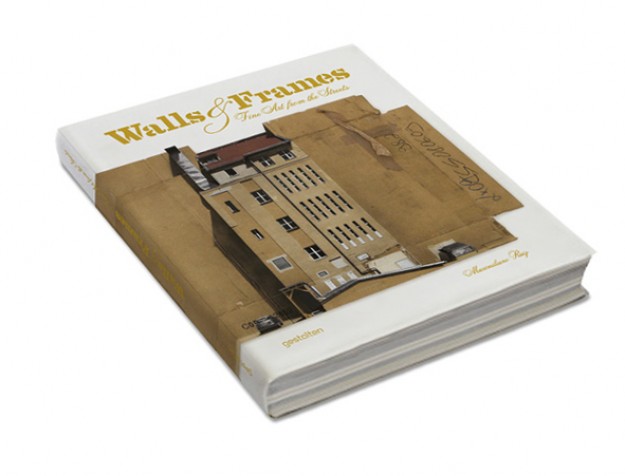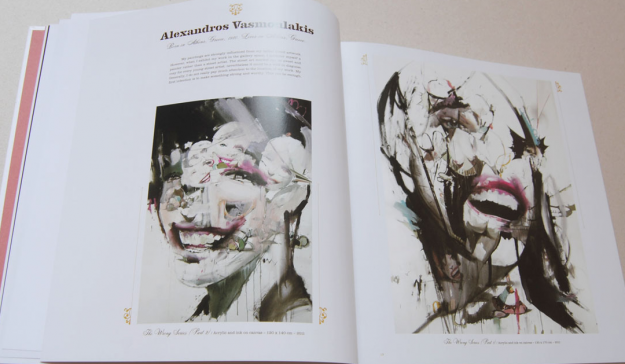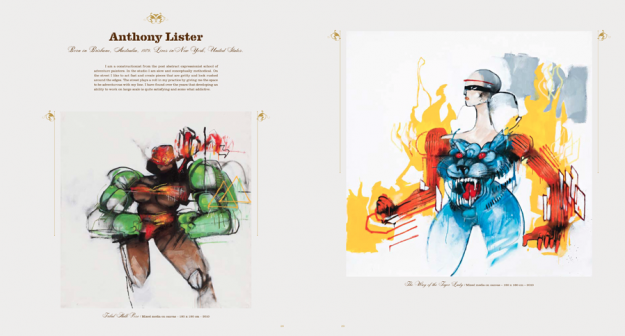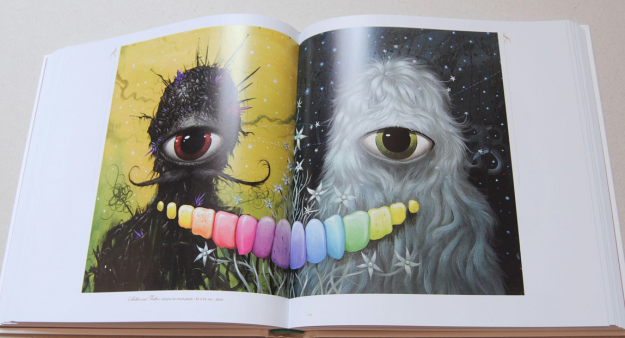
Even though Walls & Frames by Maximiliano Ruiz has been out for a few months now, I have finally gotten around to reading it cover to cover and writing a proper review. With so many street art books (and how expensive the hardcover ones are out there today) we think it is important at Vandalog to try and write honest reviews about what we come across.
I have been really excited about the release Walls & Frames, not just because of the hand painted dust jackets sold during the book launch, but because the topic it covers is one that I have researched and continue to do so in depth. As street art continues to become more and more popular as a mainstream art genre, the transition of street art into a commodity is an interesting aspect of the genre. Each artists that comes from or works in both mediums deals with the transition in their own way, and I finally thought there was a book that was going to ask the tough questions to artists about working indoors. How do you feel about your work as a commodity? Do you have a different process with canvasses versus walls? How do you justify the price tag of your work if it doesn’t take as much time? Do you only paint outdoors to promote the sale of your work? These and more are what I thought was going to be addressed in Walls & Frames, but unfortunately, the book falls short of asking any of these questions and puts forth an array of 101 artists work (some of whom have never even gotten up in the streets). From the title alone, I at least hoped, at the very least, that the Ruiz would juxtapose artists’ outdoor work with their indoor pieces as the images and let the reader assess the differences, but alas, all of the images are of work that has been shown or sold by galleries around the world. Sadly, even just with a quick flip through, one will find Walls & Frames just another well designed coffee table book in which to impress your friends.
Right from the outface, the book is clearly more of a compilation of images rather than a critical perspective on the transition of street art. The only writing from Ruiz is in a two page preface, which states the obvious saying that street art has become a global mainstream phenomenon solidifying itself as a true art form. Using the phrase street art as an umbrella term throughout, there is no distinction about what constitutes street art and who is a street artist. Instantly confusing, the term is used a categorical phrase in order to group the names featured in the book, whether they have painted outdoors or not. The term is molded somewhat through artist quotes within the book, but does not directly address the overarching question that nobody has really answered yet: what can be described as street art in this day and age?

From the preface, the 101 artists are showcased alphabetically with their name, birth place and date as well as a quote about their work. Of course, the ones I find most interesting are those who actually address the topic of their street versus their fine art. Greek based artist Alexandros Vasmoulakis, who has successful created canvasses as amazing as his large scale abstract street art had to say the following:
My paintings are strongly influenced from my initial street artwork. However, when I exhibit my work in the gallery space, I consider myself a painter rather than a street artist. The street art market can be sweet and cozy for every young artist, nevertheless it could be a wolf in disguise. Generally, I do not really pay much attention to the location of my work. My first intention is to make something strong and worthy. This can be enough.

Thankfully, a majority of the quotes from artists are at least related to the transition from the streets to the gallery. Each artist had something different to say about the topic. Some like, Axel Void, don’t make any distinction, but many say the streets inspire their work with styles, materials or the environment. Others, like Bom K, separate the two as completely different creative entities to express themselves. Ben Frost discusses how he is mostly a gallery artist now because it takes so long to create a single piece while someone like Blek Le Rat paints on canvas since it is permanent while his street work is ephemeral lasting only a few days or hours.
While I may wish for longer read on the topic, the book is a starting point for others to continue Ruiz’s work. And besides, who doesn’t like to look at some pretty pictures once in awhile?

All images courtesy of Gelstaten
